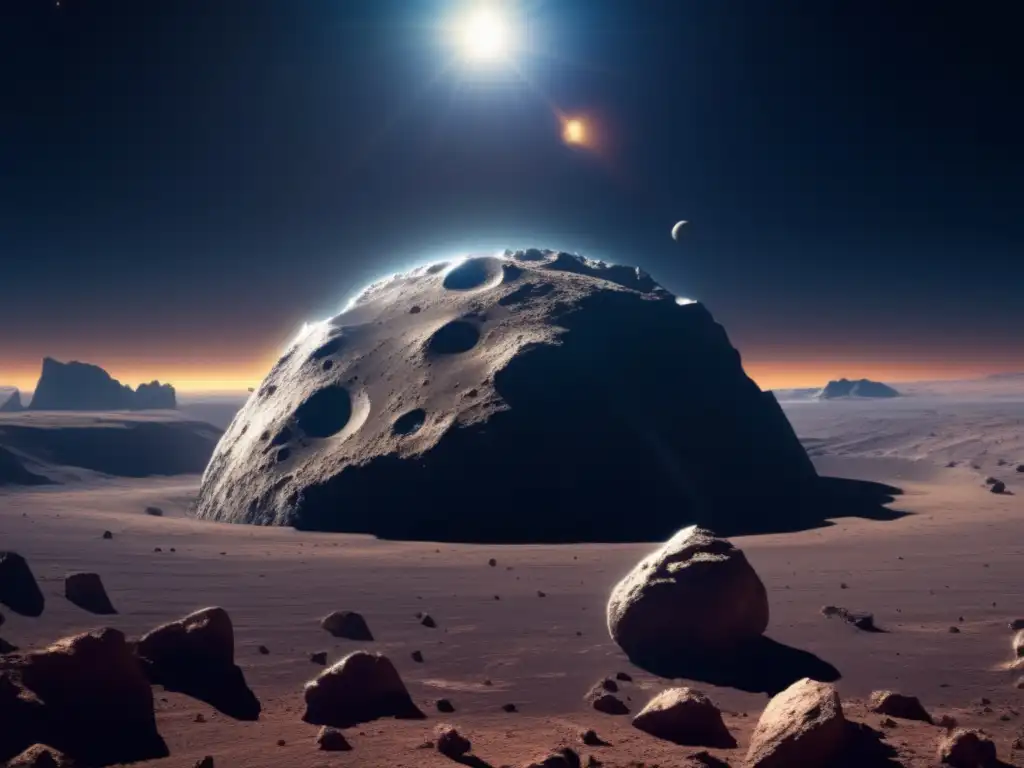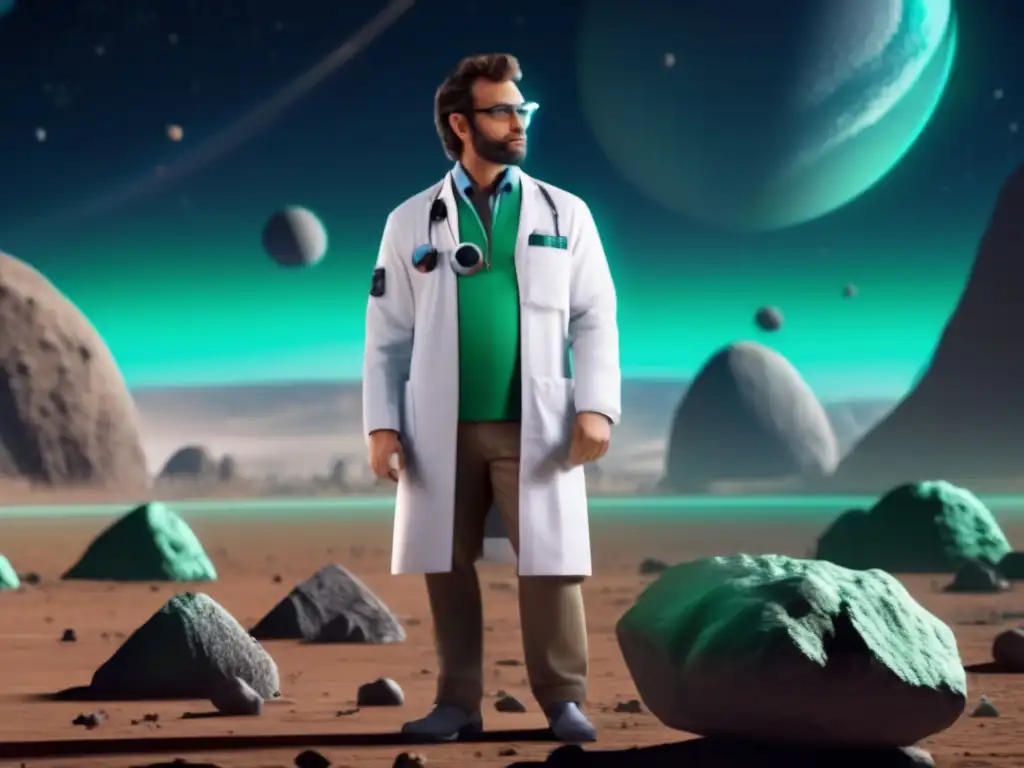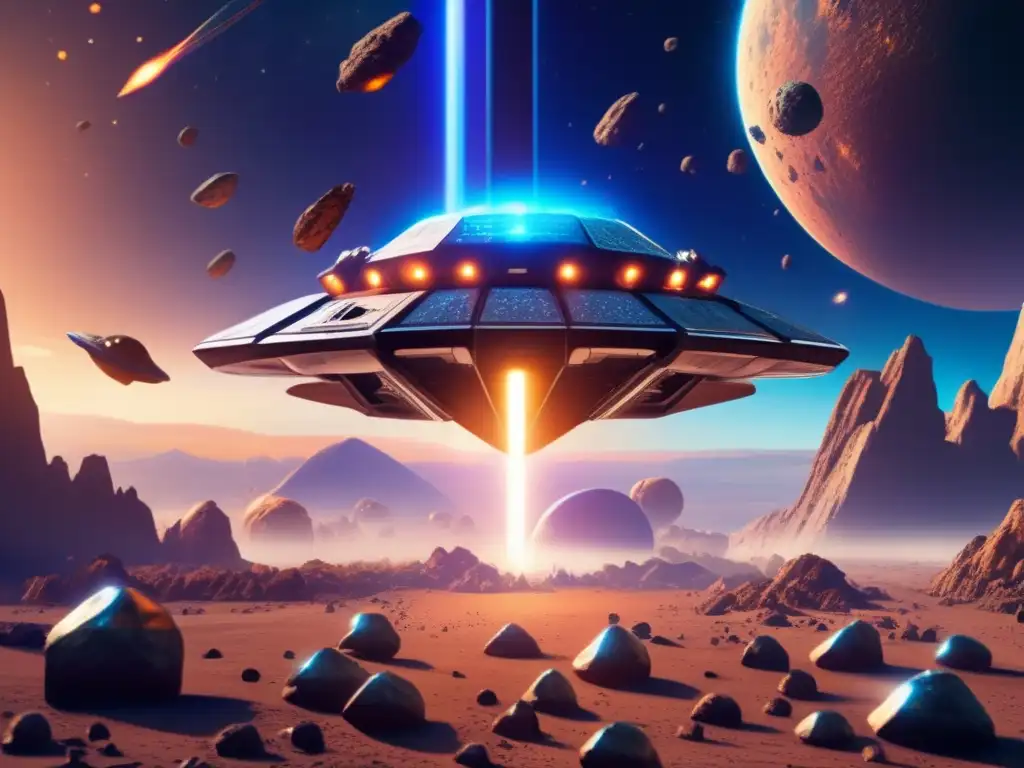Our Planetary Shield: How We Keep Asteroids At Bay

Introduction
For as long as human beings have gazed up at the night sky, asteroids have captured our imaginations. These mysterious and intriguing celestial objects have long been a subject of fascination for astronomers, scientists, and space enthusiasts alike. However, as we continue to explore our solar system, it is becoming increasingly clear that asteroids pose a very real threat to life on Earth. In this article, we will explore the complex and ever-evolving methods by which we keep these potentially catastrophic space rocks at bay.
The Threat of Asteroids

The History of Asteroid Impacts
Asteroid impacts have shaped our planet’s history in countless ways. The most famous example is, of course, the asteroid that wiped out the dinosaurs around 65 million years ago. This event had profound and lasting effects on Earth's ecosystem, paving the way for the rise of mammals and ultimately, human beings. However, there have been many other significant asteroid impacts throughout Earth's history, including the Tunguska event of 1908 and the Chelyabinsk meteor of 2013.
The Current Asteroid Threat
Today, the danger posed by asteroids is greater than ever before. According to NASA, there are currently over 25,000 near-Earth objects (NEOs) in our solar system large enough to cause significant damage if they were to collide with our planet. While the odds of a catastrophic impact are relatively low, they are not negligible, and the fact remains that asteroids have the potential to inflict catastrophic damage on cities, continents, and even the entire planet. Therefore, protecting ourselves from asteroid impacts is a vital priority.
Methods for Protecting Earth from Asteroids

Observation and Detection
The first line of defense against asteroid impacts is to detect them as early as possible. To this end, scientists and astronomers around the world are constantly scanning the sky for signs of potentially hazardous asteroids. NASA's Near-Earth Object Observations Program (NEOO) is one such project that aims to catalog all known NEOs and monitor their trajectories.
Deflection and Destruction
Once an asteroid has been detected and its trajectory has been calculated, the next step is to deflect it away from Earth. There are several methods for doing this, including:
- Kinetic Impactors: This involves slamming a spacecraft or projectile into the asteroid at high speed, thereby altering its course through sheer force.
- Gravity Tractors: This method involves using the gravitational pull of a spacecraft to slowly alter the asteroid's course over time.
- Nuclear Detonation: In extreme cases, nuclear explosives may be used to obliterate an asteroid entirely. However, this method is highly controversial and has yet to be tested in practice.
The Importance of International Cooperation
Protecting the planet from asteroid impacts is not something that any one organization or government can do alone. Rather, it requires international cooperation and collaboration between many different nations and institutions. The United Nations has recognized the need for such cooperation and has established the International Asteroid Warning Network (IAWN) and the Space Mission Planning Advisory Group (SMPAG) to facilitate communication and coordination.
Frequently Asked Questions

-
How likely is it that an asteroid will hit Earth?
The odds of a catastrophic asteroid impact are relatively low, but they are not zero. As NASA notes, there are currently over 25,000 near-Earth objects (NEOs) in our solar system large enough to cause significant damage if they were to collide with our planet.
-
What is the best way to deflect an asteroid?
There are several methods for deflecting asteroids, including kinetic impactors, gravity tractors, and nuclear detonation. The choice of method will depend on the size and trajectory of the asteroid, as well as the resources available to the organization responsible for deflecting it.
-
Who is responsible for protecting Earth from asteroid impacts?
Protecting the planet from asteroid impacts is a responsibility that falls to many different organizations and governments around the world. However, international cooperation and collaboration are critical to ensuring that we have the best possible chance of detecting and deflecting potential threats.
-
What would happen if a large asteroid were to hit Earth?
The impact of a large asteroid would likely be catastrophic, causing widespread destruction and loss of life. Depending on the size and location of the impact, it could cause tsunamis, earthquakes, and a significant impact on global climate and ecosystems.
-
How can individuals contribute to protecting the planet from asteroid impacts?
While the responsibility for protecting the planet from asteroid impacts falls primarily on organizations and governments, individuals can contribute by supporting scientific research, encouraging political leaders to prioritize asteroid defense, and staying informed about the latest developments in asteroid detection and deflection.
Conclusion
The threat of asteroid impacts is real and significant, but it is not insurmountable. Thanks to advances in technology and international cooperation, we are better equipped than ever before to detect and deflect potential asteroid threats. However, it is vital that we continue to invest in asteroid defense research and collaboration, to ensure that we are prepared for whatever challenges the universe may throw our way.
Thank you for taking the time to read this article. Please feel free to leave your thoughts and feedback in the comments section below, and don't forget to subscribe to www.asteroidrealm.com for more articles and updates on all things asteroid-related!
Additional Resources

- NASA Planetary Defense Coordination Office
- NASA Center for Near Earth Object Studies
- Comprehensive Nuclear-Test-Ban Treaty Organization
 Dodging Cosmic Bullets: Techniques For Asteroid Defense
Dodging Cosmic Bullets: Techniques For Asteroid Defense Staying Safe In The Cosmos: Strategies For Asteroid Defense
Staying Safe In The Cosmos: Strategies For Asteroid Defense Avoiding Extinction: Current Measures In Asteroid Defense
Avoiding Extinction: Current Measures In Asteroid DefenseIf you want to discover more articles similar to Our Planetary Shield: How We Keep Asteroids At Bay, you can visit the Planetary Defense category.
Leave a Reply

Articulos relacionados: